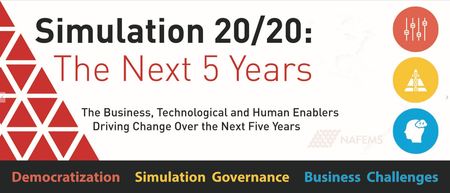Forward thinking companies have embraced targeted, solution-focused “simulation apps” to gain measurable improvements in innovation, development time, and related product quality. Leveraging this approach has allowed companies to work with dispersed departments, suppliers, and partners, all while maintaining control and consistency, enforcing standards, and ensuring the validity of analysis results.
CAE experts at these companies are rapidly embedding their expertise in simulation apps and validating them. The results are easy-to-use, solution-focused apps, which allow junior engineers and others in product teams who are not experts in the underlying simulation tools to safely and robustly run sophisticated simulations.
While the experts continue to use and require powerful, general-purpose simulation tools, others in the organization are now able to leverage this expertise inside of simulation apps, which helps to address simulation bottlenecks during the design process.
The three main pillars that anchor all useful, usable and economically-feasible simulation apps are:
- Knowledge Capture & Reuse
- Usability
- Accessibility
Accessibility
Most existing general-purpose simulation tools are bound to a user’s desktop. While some of these tools are now being made available on the Cloud, this process has been slow to gain traction for various reasons (e.g., ease of running graphics-intensive and complex applications on a desktop). Simulation apps are now beginning to make their appearance on both internal and external/public Cloud platforms, allowing users to access these simple-to-use apps easily from anywhere and on their mobile devices.
Furthermore, it is critical that a user also be able to access the required amount of computing hardware remotely. While a few (hardware) cores may suffice, there are situations when access to a large number of connected cores becomes essential (e.g., high run count for automated design exploration).
In this webinar, through an expert presentation and two end-user case study presentations, we will explore this topic further, demonstrating practical examples of simulation apps accessible on the Cloud, and the ROI that the companies have experienced.
Agenda
Welcome & Introduction- Mr. Matthew Ladzinski, NAFEMS
Accessibility
Dr. Dennis Nagy, BeyondCAE
Mr. Forrest Burney, BWAY Corp.
Dr. Jeff Crompton, AltaSim Technologies
Q & A Session



